Sculptures and Paintings Lead Christie's Sale of Indian and Southeast Asian Art
Highlights include a large and important gilt bronze figure of Amitayus, Tibet, 14th century. Estimate: $600,000-800,000. Photo: Christie´s Images Ltd 2010.
NEW YORK, NY.- On September 14th, The Christie's Asian Art Week will commence with the sale of Indian and Southeast Asian Art, offering over 200 selected works including exceptional bronzes, sculpture, and paintings from Gandhara, the Himalayas, India and Indonesia. The sale not only offers treasures at many different price levels, but also offers works that spans a wide time and geographical range from the bejeweled or remarkably simple, to monumental and miniature. An important Gandharan Silver Collection will highlight the sale along with property from various other private collections.
Gandharan Silver
The collection of important Gandharan silver was acquired in 1979 by Julian Sherrier, a wellknown collector of Gandharan art. This rare collection includes unique types of silver such as goblets, cups, bowls, medallions, sieves and a ladle dating from late 1st century B.C. to early 1st century A.D. Many have inscriptions giving the owner’s or donor’s names coming from Greek, Scythian, Iranian, and mostly Indian origin. Most notably this collection offers a view on the exciting exchange of concepts, ideas, and material goods at the crossroads of Asia at the beginning of the modern era.
The collection includes a Roman silver kantharos, Gandhara, circa late 1st century B.C. - early 1st century A.D. (estimate: $150,000-250,000). The cast and repoussé cup illustrates the Centauromachy, a mythological tale of Centaurs trying to abduct women from a wedding feast.
A Roman silver kantharos. Gandhara, circa late 1st century B.C. - early 1st century A.D. Estimate: $150,000-250,000. Photo: Christie´s Images Ltd 2010
Cast and decorated in repoussé with a deep bowl in two parts, a plain inner lining and an outer case with scenes in relief, one side with a young centaur holding a young woman in his arms, the other side with a bearded centaur grasping a struggling woman, trees with leafy tops in between and an extensive pointillé inscription in Karoshti above the bearded figure, with a turned foot separately made; 4 5/8 in. (11.7 cm.) high - 435.2 g
Provenance: Private Collection, England, prior to 1979.
Property from the Private Collection of Julian Sherrier
Literature: F. Baratte, East and West: A Central Asian Silver Hoard from the Parthian Era, 2002, p. 14-18, 58, fig. 1-3
Notes: Cups in precious metal with mythological subjects were often made in pairs for use at a symposium. The sources for the scenes may have been wall paintings or from literature, as in the present example, which illustrates the Centauromachy. The Centaurs were invited to the wedding feast of Peirithoos, the king of the Lapiths, during which they imbibed too much wine and their bestial side emerged. When the bride was presented, the Centaurs leapt up and attempted to abduct the Lapith women, and a fierce battle ensued during which the Centaurs were defeated and exiled from Thessaly.
The Battle of the Lapiths and Centaurs was a well-known symposium theme and became a favorite motif for vessel-makers and painters. Over time the Centauromachy came to symbolize the struggle between order and chaos, civilized peoples and barbarians. The Romans also often incorporated such stories to illustrate their cultural supremacy. However, the depiction of the abduction of the Lapith women is rare, as most illustrations of the Centauromachy are focused solely on the battle itself. For an example on which they do appear, see the south metopes of the Parthenon 12, 22, 25, 29.
For a similar example of a silver vessel, depicting the Battle of the Lapiths and Centaurs, see T. Sengelin, "Kentauroi et Kentaurides" in LIMC, vol. VIII, 2, 1997, p. 463, no. 405. For another example of this type of cup, see A. Oliver, Jr., Silver for the Gods, 1977, p. 123, cat no. 77.
The Karoshti inscription on the present example reads arsanobhadusa mogasa todirasa dra 20 10 4½ tra 1, which means "[Property] of the heir apparent's brother Moga [Maues], the todira; drakhma [wrong for sadera] 34½, trakhma 1." Richard Salomon has read and studied the inscriptions on the present and following lots, as well as examples in other collections; see R. Salomon and B. Goldman, "A Kharosthi Inscription of a Silver Goblet," Bulletin of the Asia Institute, 4, 1990, p. 149-157 . All of the inscriptions in this collection record the owner and weight of the vessel. The Karoshti script is based on Aramaic used extensively throughout the Persian Empire, suggesting the Parthian period in Gandhara immediately preceding Kushan, circa "Zeitwende" or year 1. For another example of this type with an inscription, see E. Errington, ed., The Crossroads of Asia, 1992, p. 96, fig. 99.
The cover lot of the catalogue, a silver cup from Gandhara, circa late 1st century B.C. - early 1st century A.D. (estimate: $50,000-70,000) is a striking silhouette with ribbed walls and is a type known from Taxila, a famous Gandharan archaeological site.
A silver skyphos with cupids. Roman or Gandhara, circa late 1st century B.C. - early 1st century A.D. Estimate $50,000 - $70,000. Photo: Christie´s Images Ltd 2010
The solid cup with thick, straight walls and the stepped rim with a shallow groove, encased in a partially preserved repoussé relief of cupids, one pouring from a cup and the other holding a duck, interspersed with a column, trees and a krater, on a separately made outsplayed ring foot, a separately cast horizontal thumb plate attached to the casing with vertical ring handle below, its upper surface engraved with foliate motifs framed by scrolling, palmettes and rosettes, with duck heads at each side along the rimThe solid cup with thick, straight walls and the stepped rim with a shallow groove, encased in a partially preserved repoussé relief of cupids, one pouring from a cup and the other holding a duck, interspersed with a column, trees and a krater, on a separately made outsplayed ring foot, a separately cast horizontal thumb plate attached to the casing with vertical ring handle below, its upper surface engraved with foliate motifs framed by scrolling, palmettes and rosettes, with duck heads at each side along the rim; 6 in. (15.2 cm.) diameter excluding handles; 4¼ in. (10.8 cm.) high
Provenance: Private Collection, England, prior to 1979.
Property from the Private Collection of Julian Sherrier
Literature: F. Baratte, East and West: A Central Asian Silver Hoard from the Parthian Era, 2002, p. 27-30, fig. 10-11
Notes: This skyphos originally depicted four cupids engaged in Bacchic activities, a fitting subject for a wine cup. The missing fragment of this relief is published in E. Errington, ed., Crossroads of Asia, 1992, p. 95. The fragment shows two cupids interspersed with trees. One cupid is holding a staff in the crook of his arm and a bunch of grapes, and to his left is part of tree that is continued on the present example. The second cupid has a pillar with a fluted basin on a pedestal behind him, and is facing a head of Silenus on a low pedestal. Beyond is another tree with a dog turned to the right, and the wing of the cupid that is still extant on the cup.
The handle plate ornament, with scrolling and naturalistic duck heads, derives from Early Imperial silver from Pompeii and elsewhere, and continues into the 2nd and 3rd centuries. For related ornament on a patera handle of the 1st century, from the House of Menander in Pompeii, see L. Stefanelli, L'Argento dei Romani, Vasellame da Tavola e D'Apparato, 1990, no. 148. For similar ornament on a 2nd century casserole handle found at Chatuzange in 1888, now in the British Museum, see F. Baratte, et al., Tresors D'Orfevrerie Gallo-Romains, 1989, no. 192.
Himalayan Gilt Bronzes
Christie´s will also offer a significant group of extraordinarily crafted gilt bronzes. Highlights include a large and important gilt bronze figure of Amitayus, Tibet, 14th century (estimate: $600,000-800,000), which is superbly molded and richly gilt; another large and important gilt bronze figure of Vajrasattva the sixth transcendental Buddha, from Tibet or Nepal, 15th century (estimate: $500,000-700,000); and a rare and important gilt bronze figure of Avalokiteshvara, a finely modeled and superbly detailed with a floral garland, inset garnets, and an elaborate coiffure with incised locks of hair, from Nepal, circa 9th/10th century (estimate: $400,000-600,000).
A large and important gilt bronze figure of Amitayus, Tibet, 14th century. Estimate: $600,000-800,000. Photo: Christie´s Images Ltd 2010
Superbly modeled and richly gilt, seated in dhyanasana with hands folded in lap, wearing a dhoti incised with floral motif and ornate belt, adorned with anklets, armbands, necklaces and earrings inlaid with hardstones, the elegant face in meditative expression, with heavy-lidded elongated eyes and raised urna, with hair pulled back into a high chignon and secured by a foliate tiara, covered by a helmet and topped by a vajra; 16¾ in. (42.5 cm.) high
Literature: P. Pal, Tibet Tradition and Change, 1997, p. 84-85, plate 42a
Exhibited: Tibet Tradition and Change, 18 October 1997 - 18 January 1998, Alberquerque Museum, New Mexico
Notes: The Buddha Amitayus is the Buddha of Infinite Life, from amita meaning infinite and ayus meaning life. While the Buddha's hands are joined in dhyanamudra, an attitude of meditation, they also may have held a jar containing amrita, the elixir of immortality. Amitayus, who is closely linked to the Buddha Amitabha, the Buddha of Infinite Light, was an especially popular deity amongst Tibetans, and was depicted either in simple monk's robes without jewelry or crown, or as the crowned Amitayus, as in the present example. The fluid style and high copper content alloy beneath the rich gilding likely points to a Newari craftsman working for a Tibetan commission.
A large and important gilt copper figure of Vajrasattva. Tibet or Nepal, 15th century. Estimate: $500,000-700,000. Photo: Christie´s Images Ltd 2010
Superbly modeled and finely cast, seated in dhyanasana holding a vajra and ghanta in his hands, wearing a dhoti with incised pattern and ornate jewelry with inlaid hardstones, the tranquil face with raised urna surmounted by an elaborate foliate tiara and high chignon; 16¼ in. (41.3 cm.) high
Provenance: The Zimmerman Family Collection, before 1991
Literature: P. Pal, Art of the Himalayas: Treasures from Nepal and Tibet, 1991, p. 130-132, cat. no. 70
Notes: In the catalogue entry for this piece in Art of the Himalayas, P. Pal notes: "The text [Advayavajrasamgraha, an important Vajrayana text] further informs us that Vajrasattva 'represents a stringent taste, the autumn season, the letters of the alpahabet ya, ra, la, and va, and the part of the night from midnight to day break.' In both Nepal and Tibet he is regarded as the sixth transcendental Buddha. Although he sits in the posture of a Buddha, he is sumptuously adorned like a bodhisattva." (p. 71)
The rich ornamentation points to a Tibetan commission, but it is not easy to determine whether the sculpture was cast in Nepal or in Tibet by a Newari craftsman.
A rare and important gilt bronze figure of Avalokiteshvara. Nepal, 9th/10th century. Estimate: $400,000-600,000. Photo: Christie´s Images Ltd 2010
Standing with left leg slightly bent, his right hand raised in the abhayamudra with a chakra on the palm, his left in varadamudra, the face with almond-shaped eyes and arched brows, wearing a long dhoti secured with an ornate belt, sacred thread across the torso, antelope skin across his shoulder and a floral sash around waist and thighs, adorned with inlaid jewelry, the headdress centered by a stupa; 13½ in. (34.2 cm.) high
Provenance: Acquired in London, 1977
Notes: This compactly and finely modeled sculpture is superbly detailed with a floral garland and inset garnets, elaborate coiffure with incised strands of hair, and a reddish underlying gilding and brighter secondary fire gilding characteristic for early bronzes. The more stout features and exaggerated hip equally support a circa 10th century date. The crown bears a central stupa-like element, which could denote an image of Maitreya, compare with a related example formerly in the John and Berthe Ford Collection bearing the kundika in the left hand, see P. Pal, The Arts of Nepal, vol. 1, 1974, cat. no. 212. For a later example with similar facial features and floral motifs on the belt, sash and band of the crown, see P. Pal, Art of Nepal, 1985, p. 105, fig. S25.
Leading the rest of the sale are eight gilt bronzes from The Collection of a Gentleman, including a richly gilt bronze figure of Vajrasattva from the Zanabazar School of Mongolia, 18th century (estimate: $200,000-300,000). This is a superb example of craftsmanship and elegance from the workshops of Zanabazar (1635-1723), a religious leader, artist and master craftsman in Mongolia. Further outstanding gilt bronze examples include a rare gilt bronze figure of Vajrapani from Northeastern India of the Pala Period, 11th century (estimate: $40,000-60,000); a gilt bronze figure of Vajradhara from Nepal, 15th/16th century (estimate: $40,000-60,000); and a gilt bronze figure of Tsongkhapa from Tibet, 15th century (estimate: $60,000-80,000).
A gilt bronze figure of Vajrasattva. Mongolia, Zanabazar School, 18th century. Estimate: $200,000-300,000. Photo: Christie´s Images Ltd 2010
Seated in dhyanasana on a tall double-lotus base with beaded rim, his hands holding a vajra and bell, wearing a dhoti incised with floral pattern at the hem, adorned with beaded festoons and ornate jewelry, the serene face with elongated eyes and raised urna, the hair pulled into a high chignon and topped by a finial, secured with a foliate tiara with locks falling onto the shoulders; 12½ in. (31.8 cm.) high
Provenance: Acquired in Hong Kong, 1980s
Notes: This is a superb example of the craftsmanship and elegance of pieces from the workshops founded by Zanabazar (1635-1723), religious leader, artist and master craftsman in Mongolia. Of good size, this sculpture displays the characteristic raised lotus base and graceful treatment of the body and ornamentation, richly gilt overall.
A rare gilt bronze figure of Vajrapani. Northeastern India, Pala Period, 11th century. Estimate: $40,000-60,000. Photo: Christie´s Images Ltd 2010
Standing on a round double-lotus base over a stepped pedestal and holding a vajra in his right hand, wearing a dhoti and jewelry, his face with almond-shaped eyes and gentle smile surmounted by a foliate tiara and a high chignon topped with a finial, flanked on either side by a lotus stem supporting the bell, all backed by a flaming openwork mandorla; 12 3/8 in. (32.2 cm.) high
Provenance: Acquired in Hong Kong, 1980s
Notes: This is a superb example of a Pala-period altarpiece. It displays all the animated and refined characteristics of the mature style that would serve as prototype for later sculptural traditions in the Himalayas. This rare example is fire-gilt as opposed to the common brass alloy.
A gilt bronze figure of Tsongkhapa. Tibet, 15th century. Estimate: $60,000-80,000. Photo: Christie´s Images Ltd 2010
Seated in Lotus Position on a double-lotus base with beaded rims and hands in dharmachakramudra, wearing heavy inner and outer patchwork robes incised with a diamond stippled pattern at the hem, the smiling face with downcast eyes, his hair cropped short, flanked on either side by a lotus stem bearing a silver or iron sword and a lapis lazuli-inlaid manuscript, the base plate incised with double vajra; 7 3/8 in. (18.7 cm.) high
Provenance: Acquired from Spink and Sons, Ltd, London, circa 1992
Literature: Spink and Son Ltd., Light of Compassion, Buddhist Art from Nepal and Tibet, 1997, p. 24-25, fig. 12
Exhibited: Light of Compassion, Buddhist Art from Nepal and Tibet, Spink and Son, Ltd, London, 18 September - 16 October, 1997
Notes: Tsongkhapa, also known as Je Rinpoche, was born in the Amdo region of Tibet in 1357. He was a highly respected Buddhist scholar and is credited as being the founder of the Gelug Buddhist sect, known as the "Yellow Hat" sect, one of the most powerful and widespread in the Buddhist religion.
Tsongkhapa is revered as an incarnation of the bodhisattva Manjushri, and was reported to have seen and conversed with the deity from a young age. The current bronze example can be seen holding the stems of lotus flowers supporting a sword and book, which are the prime attributes of bodhisattva Manjushri.
Indian and Khmer Sculpture
In addition, a strong group of sculpture from several private collections will be offered, including a blackstone stele of Umamaheshvara, Northeast India, Pala Period, 11th century (estimate: $80,000-120,000); a large bronze figure of a Devi, South India, Vijayanagara Period, 14th century (estimate: $200,000-300,000); and a sandstone figure of Uma, Khmer, Angkor Period, Baphuon Style, 11th century (estimate: $100,000-150,000).
A blackstone figure of Umamaheshvara. Northeast India, Pala Period, 11th century. Estimate: $80,000-120,000. Photo: Christie´s Images Ltd 2010
Shiva seated with his pendant leg on his bull and Parvati on his knee, holding the lotus and trident in his upper hands and tenderly embracing his wife with the others, she with one arm around him and holding a mirror in the other, her leg resting on the lion below, both wearing striated dhotis and adorned with elaborate jewelry and tiaras, their finely carved faces with tender expressions, all backed by a halo with a beaded edge; 29 in. (74 cm.) high
Provenance: Acquired in London, 1999
Property of a private Australian collection.
A large bronze figure of a Devi. South India, Vijayanagara period, 14th century. Estimate: $200,000-300,000. Photo: Christie´s Images Ltd 2010
Standing in tribhangha on a circular lotus base, her right hand raised holding a lotus and her left extended following the curve of her body, clad in a long pleated dhoti with an elaborate sash falling gracefully at her sides, further adorned with various jewelry, her face in a serene expression with almond-shaped eyes and flanked by elongated earlobes, her hair surmounted by a high headdress with foliate pendant at center; 33¼ in. (84.4 cm.) high
Provenance: Private Collection, France, acquired in 1978
Property from the Collection of a Former Ambassador
A sandstone figure of Uma Khmer, Angkor period, Baphuon style, 11th century. Estimate $100,000 - $150,000. Photo: Christie´s Images Ltd 2010
Beautifully modeled in the round, the face with a benevolent expression and finely braided hair rising to a domed chignon with curls hanging down and topped by a lotus, her sampot secured at her waist by a belt with a fishtail sash in front; 31½ in. (80 cm.) high
Provenance: Private Collection, Zurich, acquired from Spink & Son, Zurich, Ltd., 20 July 1972
Property from a Swiss Estate
Indian and Tibetan Paintings
The sale also presents a superb selection of paintings, including an Illustration from the Bhagavata Purana: The Demon Samvara Throws Pradyumna into the Ocean, India, Basohli, circa 1769, (estimate: $15,000-20,000); a large and important silk appliqué Thangka of Offerings to Vajrabhairava, Mongolia, circa 1800 (estimate: $250,000-350,000); a Thangka of the Ninth Karmapa, Wangchug Dorje, Tibet, 18th century (estimate: $40,000-60,000); and a Thangka of the Thirteenth Karmapa, Dudul Dorje, Tibet, 17th century (estimate: $15,000-20,000).
An Illustration from the Bhagavata Purana: The Demon Samvara throws Pradyumna into the Ocean. India, Basohli, circa 1769. Estimate $15,000 - $20,000. Photo: Christie´s Images Ltd 2010
Depicting the white-skinned demon at left having tossed the infant Pradyumna into the ocean filled with fish, an elephant and fanciful creatures, surrounded by a red border and with inscriptions in Gurmukhi and Devanagiri on the verso. Opaque pigments and gold on wasli; 10 x 14 in. (27.6 x 37.5 cm.), image; 11 x 15 in. (30.3 x 40 cm.), folio
Notes: Pradyumna was the child of Krishna and Rukmini. When he was just six days old, the demon Samvara kidnapped him and threw him into the ocean where he was swallowed by a fish. This fish was caught by a local fisherman who's wife, Mayadevi, discovered him when opening the fish. The sage Narada revealed the child's identity to her, and she raised him under the guise of her own son to protect him. When Pradyumna was older, Mayadevi revealed his past to him, whereby he challenged the demon and killed him, thus fulfilling his destiny. A large and important silk appliqué Thangka of offerings to Vajrabhairava. Mongolia, circa 1800. Estimate $250,000 - $350,000. Photo: Christie´s Images Ltd 2010 A mandala of ritual implements at center with the outline of the wrathful deity above and a palace in a pond below, multiples of auspicious symbols and ritual implements on either side, ferocious beasts including yak, tigers, horses, camels and elephants below and black birds with human, tiger, and elephant skins hanging from above; 53½ x 94½ in. (136 x 240 cm.) Literature: J. Kuhr, ed., Visions of the Cosmos: From the Milky Ocean to an Evolving Universe, 2009, p. 14-15 Exhibited: "Visions of the Cosmos: From the Milky Ocean to an Evolving Universe," Rubin Museum of Art, New York City, 11 December 2009 - 10 May 2010 Notes: Long, horizontal thangkas such as these are part of a uniquely Tibetan type of painting known as rgyan tshogs ("sets of ornaments") or bskang rdsas ("material for the banquet"), usually wall paintings for shrine rooms dedicated to Dharmapalas, hence the format. In all of these paintings, the deity to which it is dedicated is portrayed as a disembodied image defined only by attributes, such as the top center of the present example. Below this is the mandala that represents the cosmos and the palace of Vajrabhairava, and at bottom is the universe depicted by a round pond with Mount Meru in the center and the palace of the gods on top. To either side are all the offerings presented to wrathful deities, including animals, ritual implements, auspicious symbols and, of course, the entire universe. For a directly related example see, P. Pal, Himalayas, An Aesthetic Adventure, 2003, p. 275-275, fig. 185.
W.B. Archer, in Indian Paintings from the Punjab Hills, p. 50f., refers to this series as "the Large Guler-Basholi" Bhagavata Purana. He notes that "specific scenes and details are frankly based on the Gita Govinda [by Manaku] of 1730-35," as well as "a conscious adoption of idioms, connected with the work of... Nainsukh," suggesting that the principal artist of this series may have been Nainsukh's nephew and Manaku's son, Fattu.
Archer dates the series to 1760-65. However, Edwin Binney reported that K. Khandalavala and B. Goswamy discovered the date 1769 written on a folio in the Binney Collection, cf. E. Binney, Panorama de la miniatura de la India: Miniaturas de la coleccion de Edwin Binney III, 1973, no. 30.
Thangka of the Ninth Karmapa, Wangchug Dorje, Tibet, 18th century (detail). Estimate: $40,000-60,000. Photo: Christie´s Images Ltd 2010. Photo: Christie´s Images Ltd 2010
Seated at center on cushions over a lion throne with three tables of offerings in front of him, wearing rich red and gold robes and distinctive black hat, and holding the golden vase, his four attendants similarly dressed and holding various implements, and deities seated in the clouds above, all in a lush mountainous landscape, with inscriptions in gold and collector's stamps on the verso. Opaque pigments and gold on textile; 18½ x 11¾ in. (47 x 29.7 cm.)
Provenance: Private Collection, Switzerland, acquired in 1972 Property from the Collection of Dr. Detlef I. Lauf Literature: D. Lauf, Tibetan Sacred Art: The Heritage of Tantra, 1976, p. 204, fig. no. 86 Notes: The central figure of the ninth Karmapa Wangchug Dorje (1556-1603) wears the typical black hat common to all recognized rebirths in the Karmapa incarnation lineage. He holds the right hand up to the heart in a gesture of blessing and the left hand in the lap holds a long-life vase. Of the sixteen Karmapas, only the ninth is consistently depicted in one of two ways, either as the present example, or with his right hand extended onto his knee and the left hand holding a book. Wearing the red and orange robes of a fully ordained monk, he also wears an outer meditation cloak, gold and richly patterned. Karmapa sits on a cushioned throne with an ornate backrest with two dragon heads looking inwards at the seated figure. A large black lacquer table supports victuals and libations while again in front two more tables, pink and blue, present offerings, jewels and precious substances - real and imagined. A thangka of the Thirteenth Karmapa, Dudul Dorje. Tibet, 17th century. Estimate $15,000 - $20,000. Photo: Christie´s Images Ltd 2010 The Karmapa seated on a lotus base, wearing red and orange brocade robes and distinctive black hat, backed by a pink mandorla and green halo, with Vajrayogini Varahi above dancing over a prone figure and Bernagchen Mahakala with Shri Devi astride a horse, below, both backed by flaming mandorlas, all on a tranquil riverbank with hand- and footprints in the corners. Opaque pigments and gold on textile; 19½ x 13 in. (49.4 x 33 cm.) Provenance: Private Collection, Switzerland, acquired before 1980 Property from the Collection of Dr. Detlef I. Lauf
The four attendant figures wearing monastic robes and red caps and hold various offerings, including a large and fan-like Drugpa Kagyu hat, held with a white scarf (middle left), tea from a round white teapot, held aloft with a white scarf (lower left), a long and red Tibetan folio text with a white scarf (middle right), and a metal censor wafting incense and held by a gold chain, along with a bag of precious incense in a striped woven cloth bag decorated with frills along the bottom (lower right).
Directly behind and above Karmapa is a tall tree trunk with knotty branches extending into the clouds, supporting a throne and pink lotus seat for the blue Vajradhara, flanked by Indian mahasiddha Tilopa (left) and Naropa (right). Slightly below on the left side is Marpa Chokyi Lodro with Dagmema, and on the right is Milarepa, student of Marpa, wearing traditional white robes and a red meditation belt, and cupping his ear while singing to six figures seated in front. To the left side of the Karmapa's face sits Gampopa Sonam Rinchen, the famous student of Milarepa, wearing the robes of a monk and the hat which he designed. At his feet sits Pagmodrupa, depicted as balding and with facial hair, founder of the Eight Minor Kagyu Traditions. To the Karmapa's right is Pagmodrupa, seated in a grass meditation hut situated in a dense green forest.
On the back of the cloth mountings on this painting is the single Tibetan word, "tsowo," which means "main" or "principal" and indicates this was the first in a set of paintings. There are no apparent inscriptions on the front of the painting. There is a set of inscriptions on the verso but they were applied long after the painting was created, likely by the former owner, and do not pertain to the painting.
Notes: The Thirteenth Karmapa Dudul Dorje lived 1733-1797. Bernagchen Mahakala is the principle protector deity of the Karma Kagyu Tradition of Tibetan Buddhism.

/https%3A%2F%2Fprofilepics.canalblog.com%2Fprofilepics%2F1%2F0%2F100183.jpg)
/https%3A%2F%2Fstorage.canalblog.com%2F03%2F02%2F119589%2F96711876_o.jpg)
/https%3A%2F%2Fstorage.canalblog.com%2F11%2F31%2F119589%2F94773502_o.jpg)
/https%3A%2F%2Fstorage.canalblog.com%2F20%2F83%2F119589%2F94772815_o.jpg)
/https%3A%2F%2Fstorage.canalblog.com%2F26%2F72%2F119589%2F75604929_o.jpg)
/https%3A%2F%2Fstorage.canalblog.com%2F59%2F60%2F119589%2F26458628_o.jpg)

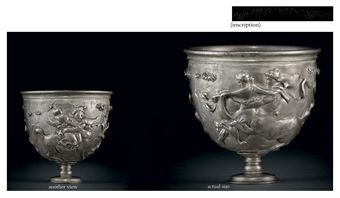

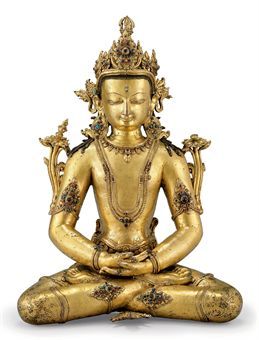
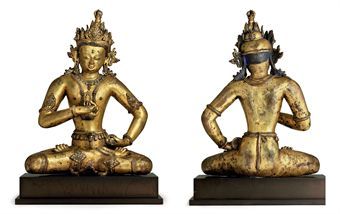


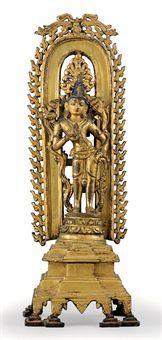




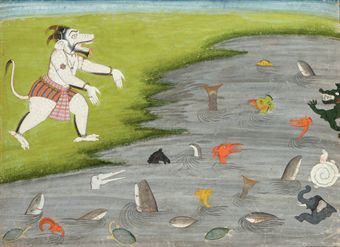





/http%3A%2F%2Fstorage.canalblog.com%2F74%2F94%2F119589%2F128705688_o.jpg)
/http%3A%2F%2Fstorage.canalblog.com%2F56%2F88%2F119589%2F127649882_o.jpg)
/http%3A%2F%2Fstorage.canalblog.com%2F41%2F75%2F119589%2F126978834_o.jpg)
/http%3A%2F%2Fstorage.canalblog.com%2F08%2F51%2F119589%2F126856859_o.jpg)